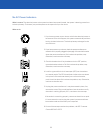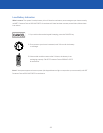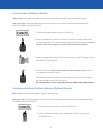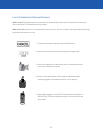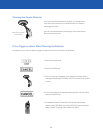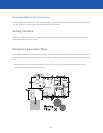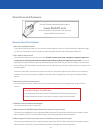
Find at least two ways to escape from each room. One will be the door leading to the normal exit. Another may
be a window that opens easily. If the window is far above the ground, you may need to install an escape ladder
nearby. Identify a place outdoors where everyone will meet after leaving the building.
2. Review the escape plan with everyone who lives in your home and practice escape procedures.
3. To increase the time you will have to escape a fire, sleep with your bedroom door closed. If you suspect a fire,
touch the door. Do not open the door if it feels hot. If it does not, brace your shoulder against the door and
open it slowly. Be ready to slam the door if smoke or heat rushes in. Leave the building quickly and call the fire
department from a neighbor’s telephone or from your cellular telephone.
In the event of a fire, the best way to ensure the safety of your family or employees is to get the earliest possible
warning. This is best achieved by installing fire detection equipment in all rooms and areas of the protected
premises. This includes:
• A smoke detector installed outside of each bedroom
• Heat or smoke detectors in the living room, dining room, kitchen, hallways, attic, furnace room, closets, utility and
storage rooms, breakroom, basement and garage.
This equipment should be installed in accordance with the National Fire Protection Association’s Standard 72.
For additional information, write:
National Fire Protection Association
1 Battery March Park
Quincy, MA 02269
Or visit: www.nfpa.org
California residents may also write:
California State Fire Marshal
7171 Bowling Drive, Suite 600
Sacramento, CA 95823
Or visit: www.osfm.fire.ca.gov
Note: There is a communicator delay of 30 seconds built into this control panel. It can be removed or increased
to a total delay of 45 seconds. Discuss this option with your ADT Installation Technician to determine what will
work best in your home.
40



